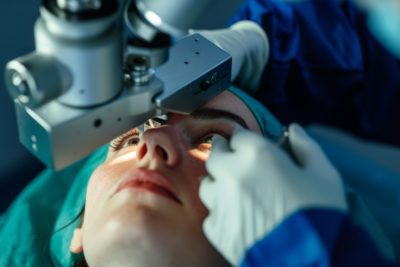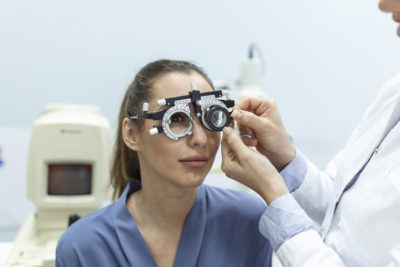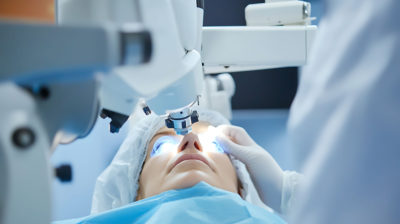What is common to Tiger Woods, Anna Kournikova, Sreesanth and Geoff Boycott?
Apart from being great Sportspersons, they also share a history of having worn glasses. Just like a photographer cherishes his camera, and the chef his knives, so is the human body cherished by a sportsperson. It is his/ her body which allows him to achieve greatness. And his vision is a major asset to his performance on field. Sportspersons are known to develop their vision to enhance peripheral awareness and their ability to track moving objects. Vision affects athletes’ hand eye co-ordination, depth perception, peripheral awareness and distance perception while he is out on the field. For those unfortunate ones with vision troubles requiring spectacles, the vigorous physical activity that is involved always poses a risk of the glasses falling or breaking or dust / debris going into the contact lens… and should this happen right in the thick of the action, it could even cost the athlete his game!
This is what happened with Ashwin. He is a national football player and used to normally wear contact lenses while playing. During one of the matches dust entered his eye and led to lots of irritation and watering. He had to excuse himself from the field and get his replacement on the field. This is something that does not go well with players who have practised hard to shine on the field.
In the olden days, athletes had no other choice but to grin and bear it. And then Science introduced the wonder called Lasik. This could finally give sportspersons the liberty to do away with their glasses or contacts and improve their game. However people involved in outdoor sports or physical activities had their reservations about Lasik. Conventional Lasik surgeries involve the use of a blade to create a flap on the clear outer dome of the eye called the cornea. Once this flap has been created, it is lifted and laser is used to reshape the cornea. This is how Lasik helps correct near or far sightedness. What makes Lasik risky for athletes is that they stand a risk of displacing the flap if they suffer any direct injury to the eye. Given the nature of their activities, the possibility of an injury is much higher than in the regular population. Athletes also believe that undergoing the surgery might force them into inactivity and out of action for weeks or months.
Worries about safety and long recovery periods are largely unwarranted. Lasik is one of the safest surgeries with fast recovery periods. About 95% of people who undergo Lasik experience no side effects and are able to resume work in a few days. On the other hand, the concerns about the displacement of flaps or longer inactivity perior are justified with conventional Lasik. This is where SMILE Lasik comes in as a breath of fresh air bringing unmatched safety for athletes.
SMILE (Short for SMall Incision Lenticule Extraction) Lasik or Relex Smile is the latest technology in the field of laser vision correction. As opposed to conventional Lasik where a blade is used to cut a flap in the cornea, SMILE makes use of femtosecond lasers to make a tiny (3-4 mm small) hole in the periphery of the cornea. The same laser beam also creates a tiny disc of the corneal tissue. This disc is then removed from the tiny incision, thus changing the form of the cornea and correcting the refractive error. Hence, it is a bladeless and flapless Lasik surgery.
Why SMILE is great for athletes?
- As no flaps are created, there are no chances of flap displacements even with direct injury
- As there is no flap, biomechanical strength of the eye is much better preserved
- Thanks to the minimal invasiveness and minuteness of the hole created in Smile Lasik Surgery, chances of infection and other complications are highly reduced.
- No loss of productivity in terms of precautions and restrictions. Quick and easy healing and recovery after Smile Lasik Surgery.
- Since it is completely bladeless, chances of complications in the future are greatly reduced.
- Dryness of eyes after surgery as seen in conventional Lasik is decreased after smile Lasik.
Technology is constantly enhancing our lives. SMILE Lasik is the next big thing in the field of medicine that will definitely put a career – enhancing smile on the face of many an athlete.









